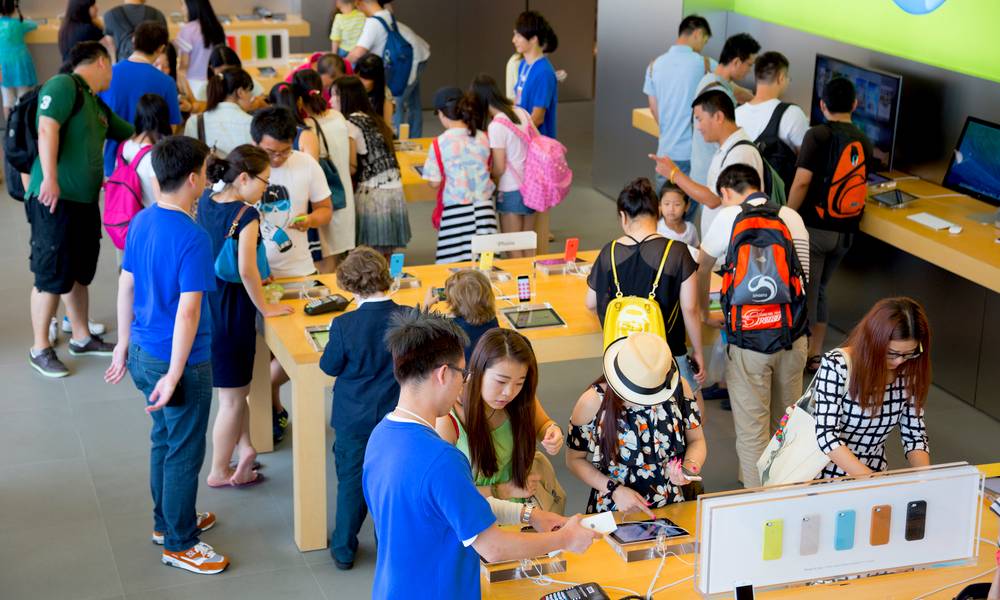How Savvy Scammers in China Finessed Apple out of Millions
 Credit: DoublePHOTO studio / Shutterstock
Credit: DoublePHOTO studio / Shutterstock
Toggle Dark Mode
In May 2013, the Apple Store in Shenzhen reported that it received more than 2,000 warranty claims per week. The unusually large volume of claims prompted Apple to temporarily shutter what was, at the time, its only retail store in China while it investigated.
The iPhone maker soon discovered that it was the target of a sophisticated fraud scheme run by tech-savvy criminal networks in Shenzhen, which is often called the Silicon Valley of China. An Apple data scientist assigned to the matter found that more than 60 percent of repaired iPhones in China were using a new Apple ID – a strong indication of rampant fraud.
The well-organized scheme involved thieves acquiring hundreds of iPhones (often illegally), stripping them of valuable components, such as the processor and screen, and replacing them with junk. Some Apple employees in Shenzhen reported that the components had been replaced with balled up chewing gum wrappers in some cases.
They would then lug suitcases full of stripped down iPhones to the Apple Store and hire people to turn them over to the Genius Bar for free replacements or repair under the warranty. The fraudsters would then resell the replacement devices. Meanwhile, the stolen components were shuttled off to smaller cities in China to refurbish other iPhones or to create so-called “Frankenphones” to be sold in the country’s thriving black market for knockoffs.
Their efforts ended up costing the company hundreds of millions of dollars that year. According to The Information, Apple had originally allocated $1.6 billion for global warranty claims in fiscal year 2013, and ended up spending $3.7 billion.
“In the old-school world, this would be a car chop shop, where you would take all the pieces off and sell them,” said Kyle Wiens, co-founder and CEO of iFixit, to The Information. “Now they’re doing that with iPhones.”
And so, for the past five years, Apple has been devising and implementing aggressive countermeasures against repair fraud, which has reportedly cost the company hundreds of millions of dollars. Rather than turning to local authorities, Apple began requiring proof of ownership and reservations for repairs. Apple also began equipping its retail stores with diagnostic equipment to quickly identify iPhones with fake components.
When components began disappearing from Apple assembly lines, the company dipping them in special dyes and waterproof coating that can only be seen at certain wavelengths, so that employees could easily verify legitimate iPhone parts.
The fraudsters began adopting aggressive measures of their own in response, including throwing tantrums in stores and bribing and threatening Apple employees for customer data, serial numbers, and inside information on Apple’s new screening methods. But Apple’s efforts appear to have paid off after 5 years. The Information reports that fraud claims throughout the greater China region have dropped from 60 percent to 20 percent, saving Apple hundreds of millions of dollars.
As for everyone else, the stricter screening methods have meant that customers who have gotten third-party repairs and screen replacements are met with error reports and fall afoul of Apple’s increasingly complex warranty requirements. The situation helps explain why your iPhone repair requests are met with some skepticism at Apple stores and take longer to fulfill.
Unfortunately, other criminal elements in other countries, including Turkey and the UAE, seem to have caught on. While fraud has finally declined in China, it has seen an uptick in other regions.






